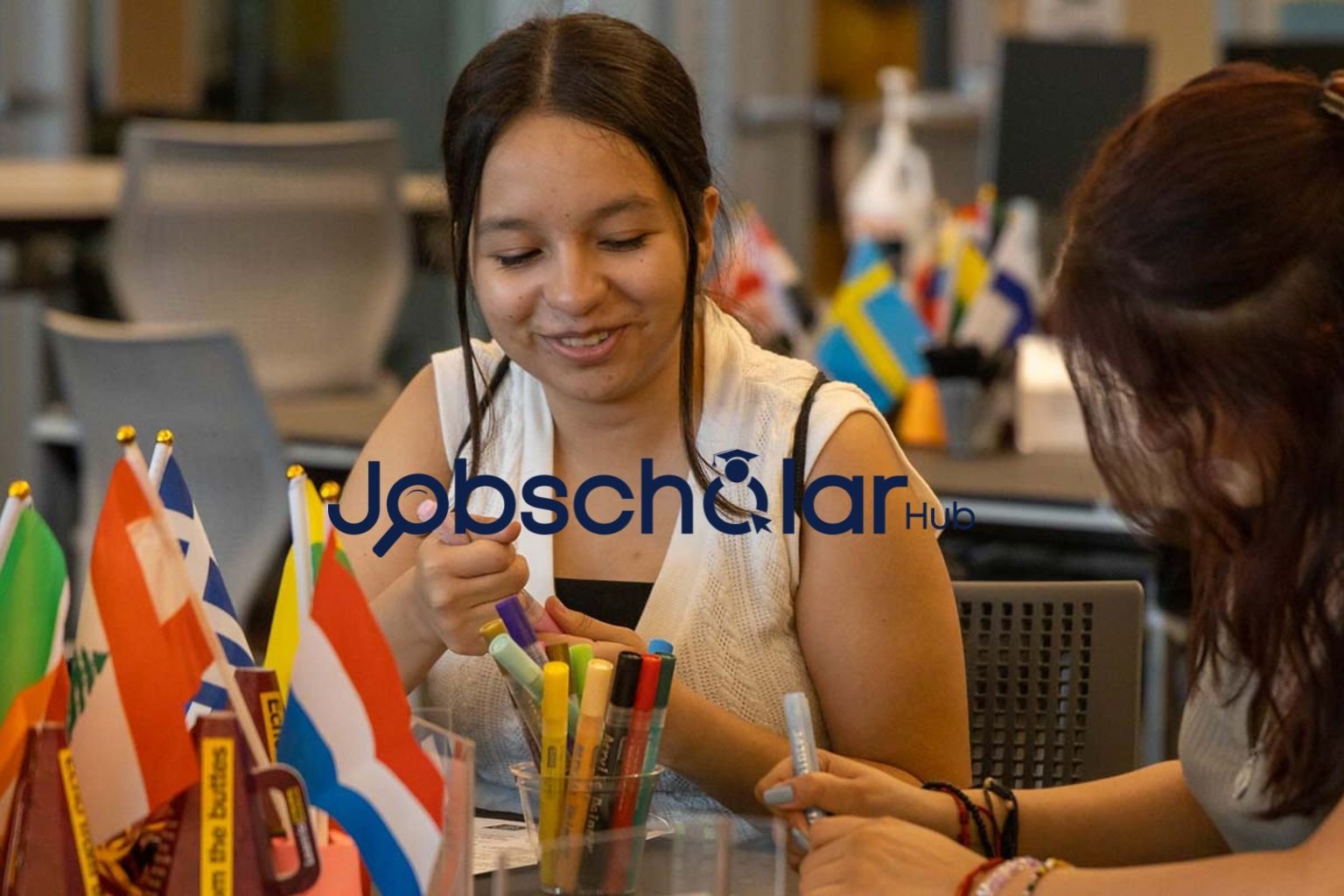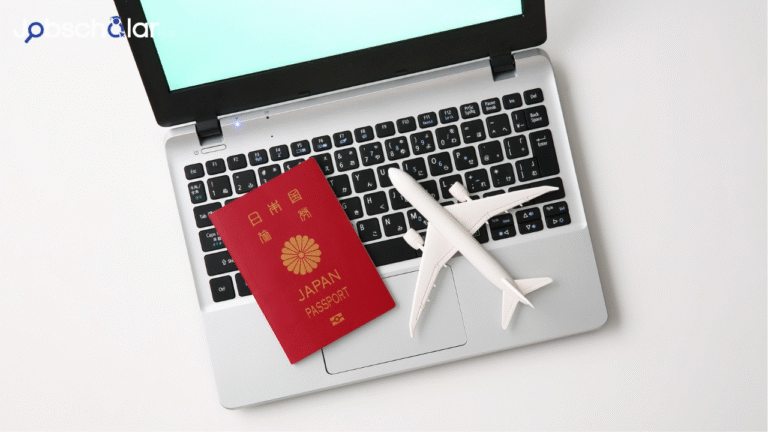The United States is a very popular area for high-quality education and also a method of advancing a career path. Because of this, many international students choose to attend school in the United States. For many students, the F-1 visa itself is a gateway to the American dream—an opportunity to live in the United States, study, and work here while earning a degree.
But the process for getting an F-1 visa can be a whole lot more complicated, and it doesn’t end on graduation day.
No matter what stage you’re in—beginning the application process, focusing on keeping your status while you’re here, or contemplating your next steps after graduation—knowing how the F-1 visa operates can help you to make the most of your time in the U.S. We will guide you every step of the way. Continue reading!
Table of contents
- What is the F-1 Visa for?
- What Is the F-1 Visa Eligibility Requirements?
- How to Apply for the F-1 Visa?
- What You Should Know About Maintaining Your F-1 Status in the U.S.
- Changing Status as F-1 into Work Visa: H-1B Visa
- Consequences for Overstaying the F-1 Visa
- Conclusion
- Frequently Asked Questions
- References
- Recommendations
What is the F-1 Visa for?
The F-1 Visa is for those seeking to study within the U.S. at an academic institution through a full-time student status (like at universities, colleges, high school, or even through language schools). It enables students not only to follow the academic programs in the United States, but also to work part-time on their campus or internship like CPT and OPT, which is related to their study field.
F-1 Visa is for educational purpose only and thus, students must maintain their enrollment in an accredited institution while staying in the country. They can stay temporarily for practical training afterwards, or they are required to return to their country of origin.
RELATED READ: Netherlands Work Visa Requirements 2025
What Is the F-1 Visa Eligibility Requirements?

There are several main requirements for obtaining an F-1 visa:
Acceptance to a SEVP Approved School
The first step toward getting an F-1 Visa is securing acceptance to a Student and Exchange Visitor Program (SEVP) approved school. These include universities, colleges, and vocational schools. You will also need to demonstrate that you can pay tuition and living expenses. This is generally done by providing documentation such as bank statements, affidavits of support, or proof of scholarships.
Pursuing a Career in their Home Country
The F-1 visa is a non-immigrant visa, so qualifying applicants must demonstrate that they intend to return home once they are done studying. They may also have specific ties back to their home country such as family, property, or a job offer.
English-language skills
A lot of schools might require you as a student to show how well your English speaking, writing, and comprehension skills are. You might be required to write a standardised test such as the TOEFL or IELTS.
RELATED READ: Golden Years in Greece: How to Get Your Greece Retirement Visa
What can You do with the F1 Visa?

Full-Time Study
F-1 visa holders must be enrolled full-time in their academic program. That is at least 12 credit hours each semester for undergraduates (or the equivalent in other programs for graduate students).
Restricted Work Privileges
If you are a student with an F-1 visa, you are only allowed to work on campus for a maximum of 20 hours per week during the academic year and full time during academic breaks. Also, if you wish to work off campus, there are only specific situations, such as Optional Practical Training (OPT) or Curricular Practical Training (CPT) that would permit it.
Dependents (F-2 visa)
In a situation where you have a family, like a spouse and children under the age of 21 and you are on an F-1 visa, your family can come along to the U.S with an F-2 visa, but they would be barred from working while in the U.S.
RELATED READ:Must-Know B2 Visa Interview Questions for First-Time Applicants
How to Apply for the F-1 Visa?

While applying for an F-1 visa, there are various steps you would need to take to ensure smooth processing. From obtaining your acceptance letter to the interview phase, you will need a guide to ensure you ace it. Below is the perfect step-by-step guide that you need to follow.
Step 1: Obtain Your Form I-20
Getting Form I-20 is the first step you need to take. Your school in the U.S. will send you this form. Once accepted by a SEVP school, they will issue your I-20 form. This is an acceptance confirmation and contains all the necessary information to apply for your visa. You will require the I-20 form for both your visa application and your entry to the U.S.
Step 2: SEVIS Payment
The SEVIS fee (Student and Exchange Visitor Information System) must be paid in advance. Do not pay the charge, and you cannot apply for the visa. The fee aids in the identification and tracking of U.S. students. After approval, you will get a receipt that you will need to present when you go for the visa interview.
Read also: How To Get Best USA Jobs With Visa Sponsorship
Step 3: Fill Out the DS-160 Form
The next step is obtaining and filling out the DS-160 form (the online application form for U.S. visas). You will fill out the form with your personal details, information about your U.S. school, and your travel information. When you have completed it, look out for your confirmation page and barcode, which you need to print out. You need to carry it with you to your interview.
Step 4: Make your visa interview appointment.
After filling the DS-160 form and paying the SEVIS fee, you schedule the Visa interview at U.S. Embassy or consulate nearby. If you live in an area where it’s the law to have an appointment, you may have to wait a while for an appointment, so it’s always better to schedule appoints as early as possible.
Step 5: Get Ready for the Visa Interview
Usually, you should gather the following documents for the interview:
- A valid passport
- Form I-20 from your school
- DS-160 confirmation page
- SEVIS fee payment receipt
- Receipt of visa application fee
- U.S. visa-compliant passport-size photos
- Evidence of financial support (bank statements, affidavits, etc.)
- Academic transcripts and standardized test scores (where required)
Step 5: Preparing and attending the Visa interview
In the interview, you’ll be asked about your academic plans, about studying in the U.S. and about your finances. They will also evaluate your previous ties to the home country, as the consular officer will want to see that you are not attempting to settle in the U.S. permanently.
You should really read: Visa Interview Questions You MUST Prepare For — And How to Nail Every Answer!
Step 6: Wait for your Visa approval
If your visa has approval, you will get your passport back with the F-1 visa stamp. This could vary in days to weeks based on your state and situation(s). After securing your visa, you can book travel to the U.S.
You should read: Do You Know The 7 Hidden Secrets Behind Visa Denied?
Step 8: Arrive in the U.S.
You may enter the US no prior than 30 days before the program start date of your F-1 visa on your I-20. Somewhere along the way, it will go through U.S. Customs and Border Protection (CBP), who will verify your documentation and formally authorize you to enter the country.
RELATED READ: H4 Visa Interview Questions: Avoid These Mistakes!
What You Should Know About Maintaining Your F-1 Status in the U.S.

After successfully obtaining your F-1 visa and entering the U.S., maintaining your visa status in the U.S. is crucial, as non-compliance can hinder your stay in the country or potentially affect your future immigration benefits. Here are the general requirements you must follow to keep your F-1 status:
Full-Time Enrollment
That means you must be a full-time student in order to maintain your status of F-1. This generally means:
- Undergraduates: Minimum 12 credits each semester.
- Graduate students: For most programs, a full-time enrolment must entail 9 credit hours per semester, but this depends greatly on the program studied.
If you fail to maintain your full-time enrolment without the approval of your DSO (Designated School Official), this might lead to a termination of your F-1 visa. On rare occasions, however, there might be an exception, like if you are in your final semester.
Report Changes to Your DSO
In case you move from your school to a different school, your school’s designated school official must notify the Student and Exchange Visitor Information System (SEVIS) of such changes in your status.
Check out: Must-Know B2 Visa Interview Questions for First-Time Applicants
Limitations on Work
Through the F-1 visa, you can only work to a limited extent. The following are the most important work restrictions:
On-Campus Employment: When school is in session, you can work for only 20 hours per week. However, when school is not in session, you are free to work full-time which is 40 hours per week. However, you must keep in mind that these jobs are in the school library, cafeteria, or administrative offices.
Off-Campus Employment: Unfortunately, you cannot work off-campus, and if for any reason you would, it has to be pre-approved. Off-Campus Employment Types There are two broad categories of off-campus employment:
Curricular Practical Training (CPT): CPT and OPT are quite similar, with the major difference being that CPT allows students to work off-campus in jobs related to their studies. You can work part-time during academic sessions and full-time on holidays.
Optional Practical Training (OPT): After completing your program, you may be eligible for work authorization for up to 12 months (or as long as 36 months if your field of study is on the qualifying STEM list). You petition for OPT with USCIS, and you should note that you are not able to begin working until you receive your confirmation.
And of course, if you don’t follow the work rules, you can lose your F-1 status.
Are you on a scholarship? You should read: What Happens If I Don’t Use All My Scholarship Funds?
Maintain a Valid Passport
Your passport must also be valid for the duration of your stay in the U.S. If your passport is in danger of expiring when you book, you must renew it with your country’s embassy or consulate in the U.S. For those of you traveling abroad, you may also want to ensure that your F-1 visa stamp is valid, because you may have to present it.
Limit Travel Outside the U.S.
If you do leave the U.S., ensure your F-1 visa and Form I-20 are valid for re-entry. If your visa is out of date, you might need to obtain a new one on return. There are also some travel restrictions or visa delays that can affect your return.
RELATED READ: Well Detailed Guide On How To Apply For Green Card Sponsorship Jobs
Changing Status as F-1 into Work Visa: H-1B Visa

A very popular visa option for foreign workers who wish to work in the U.S. is the H-1B visa. This visa allows you to work for a U.S. employer in a position that requires your expertise, like engineering, IT, healthcare, and business.
Sponsorship for an H-1B is tied to a job role
For you to get a H-1B visa sponsorship, you must, first of all, have at least a bachelor’s degree or its equivalent in the position you need sponsorship through the H-1B visa. Your employer has to also petition U.S. Citizenship and Immigration Services (USCIS).
H-1B Cap Based
The H-1B visa is capped (limited) every year (quota basis), so the number of H-1B visas available annually is only a set number. There are exceptions — for professionals at institutions of higher education, government research organizations and nonprofit organizations — but the H-1B cap, in general, is a meritocratic process.
This means that you will not need to prepare paperwork for employers that would require your time if you are not in the H-1B lottery. It is a random process, so it’s important to apply early, and be ready.
With a H-1B visa, you can work in the U.S. for three years, after which you will have to renew for another three years. You can also get a permanent residency (Green Card), but only if your employer files on your behalf for an immigrant visa.
You should read: Top Graduate Program Scholarships
Transitioning to a graduate program or higher studies
If working is not on your agenda and studies is not; consider applying for another F1 visa, which permits you to study.
For example:
Masters or Doctorate Programs: If you want to pursue a masters or Ph. D. program, meaning that you can apply and embark on a new course of study. So, you will have to enroll full-time and your school will have to update your SEVIS record.
Change Schools: If you are changing schools, notify your current school and ensure that your SEVIS record is up to date. You must carry full-time employment in order to stay in status.
RELATED READ: Top 10 Highest Paying Jobs in Utah | 2025 Updated List
Consequences for Overstaying the F-1 Visa
One of the most important things you have to keep in mind in order to hold your F-1 status is not overstaying your visa. Overstaying in the U.S. beyond your visa’s expiration date or out of the permissible grace periods can carry strict penalties that hinder your capacity to remain in the country or seek subsequent visas.
Overstaying your visa could lead to the following consequences:
Unlawful Presence
Staying in the U.S. beyond your authorized period of stay without applying for an extension or change of status would lead to an unlawful presence. Now, if you stay over 180 days of unlawful presence, you will be barred from ever returning to the U.S. for a period of three years. If you are banned for over a year, it becomes a 10-year-long ban.
Future Visa Denial
If you overstay, it will be hard for you to get any future visas as well, including tourist, work, or student visas.
Deportation
If you get caught for overstaying, you may face removal proceedings (deportation) and will have to leave the country. It could also affect your ability to come back to the U.S. in the future.
Even though your F-1 visa will no longer be valid once it expires, you will still have a grace period of 60 days to adjust your status or decide your next move to apply for OPT, change your status, or transfer schools. However, cannot work during this grace period.
To avoid overstaying:
- Monitor Your Status: Make sure to monitor your visa expiration date and any grace period. Be alert for when your studies, OPT or other statuses expire.
- Apply for an extension or change of status, but these applications must be submitted prior to expiration.
- Leave the U.S. — If you are unable to extend your stay or change your visa status, you will be required to leave the U.S. before your visa expires to avoid unlawful presence.
Legal Options if You Overstay
If you are already overstaying your visa:
- Speak to an Immigration Lawyer: If you’ve overstayed, working with an immigration attorney to determine your options is key. You might be able to fix your situation and avoid the harsh penalties.
- Apply for a Waiver: Based on the situation at hand, you might be able to apply for a waiver of unlawful presence.
- Voluntary Departure — If they deny your application, depending on your situation, you might leave the U.S. voluntarily without facing the severe consequences of overwintering.
RELATED READ: Visa Interview Questions You MUST Prepare For — And How to Nail Every Answer!
Conclusion
The F-1 visa process can be tough, but when you plan ahead and understand your obligations, you can optimize your time in the U.S. Depending on what you want to do after graduation, whether it be employment with working visa through OPT, going back to study, or pursuing other kinds of immigration status like H-1B visa, there are plenty of options for you.
Stay informed, use guidance when necessary, and always abide by visa regulations to continue being in the U.S safely and legally. Your education doesn’t have to stop when you graduate — it could be just the beginning of your career in the U.S.
Before you go, check out: Family-Based Immigration in the U.S- Sponsorship & Visa
Frequently Asked Questions
You can work but under certain restrictions; for example, you can work on-campus, or under Optional Practical Training (OPT) or Curricular Practical Training (CPT).
You’ll have 60 days after graduation to stay in the country during your grace period to either prepare to leave or to apply for other statuses.
Yes, you are to notify USCIS if you move by completing Form AR-11 within 10 days of the change of address.
Your spouse and children under 21 may accompany you on an F-2 visa but they cannot work.
References
- studyinthestates.dhs.gov– Student Visas (F-1) in the U.S






